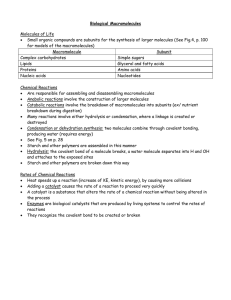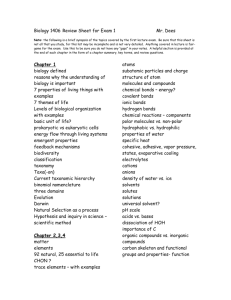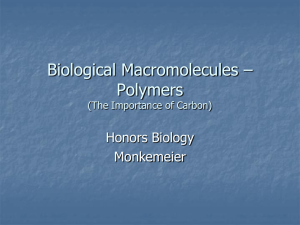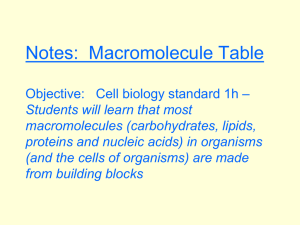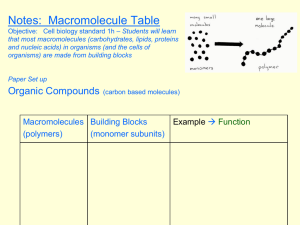Macromolecules
advertisement
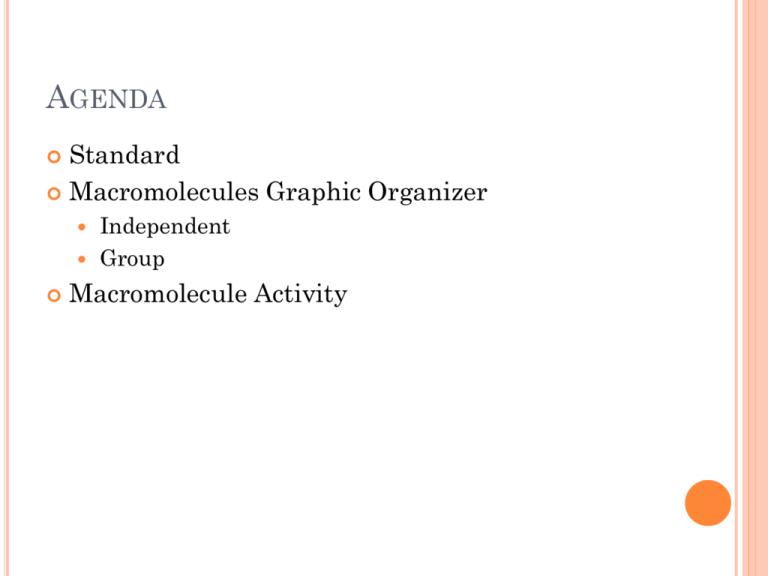
AGENDA Standard Macromolecules Graphic Organizer Independent Group Macromolecule Activity STANDARD SB1. Students will analyze the nature of the relationships between structures and functions in living cells. c. Identify the function of the four major macromolecules (i.e., carbohydrates, proteins, lipids, nucleic acids). MACROMOLECULES You will work on filling out information for each of the macromolecules on your own. Spend about 20 minutes filling it out on your on, see pages 5963 (READ ) We will then go over them together to make sure you’ve got it all. INTRODUCTION All compounds can be classified into 2 broad categoriges: Organic compounds – contain carbon and hydrogen atoms Inorganic compounds – can have carbon or hydrogen, but not both MACROMOLECULES Most of your body’s molecules are organic compounds Macromolecules are built from small organic compounds the same way a railroad train is built, by linking a lot of smaller units together into long chains Large carbon compounds are built up from smaller simpler molecules called monomers (mono = one) Monomers can bind to one another to form complex molecules known as polymers (poly = many) A polymer consists of repeated, linked units, which can also bind forming large polymers called macromolecules (macro = large) MACROMOLECULES Monomers link to form polymers through a chemical reaction called condensation reaction or dehydration synthesis. During the formation of polymers, Water (H2O), is released or is by-product of the reaction. The breakdown of some complex molecules, such as polymers, occurs through a process known as hydrolysis. Hydrolysis is the reverse of a condensation reaction. The addition of water, to some polymers can break the bonds that hold them together. CARBOHYDRATES Made up of C, H, and O. Monomer: saccharides Disaccharides are made up of two saccharides, polysaccharides are made up of more than two. Functions: Energy storage Structural components of cells Cell recognition LIPIDS Made up of C, H, O, and P Monomer: fatty acids Can be fats, waxes, or steroids Triglycerides are common lipids made up of glycerol linked to three fatty acid chains in the shape of an “E” Functions: Energy storage Membrane structure Water barrier Hormones PROTEINS Made up of C, H, N, O, P, and S Monomer: amino acid Functions: Catalyze reactions (enzymes) Cell signaling and communication Transportation Structure NUCLEIC ACIDS Made up of C, H, N, O, and P. Monomer: Nucleotide (nitrogen base + phosphate group + pentose sugar) Functions: Store and transmit hereditary information Energy carriers
